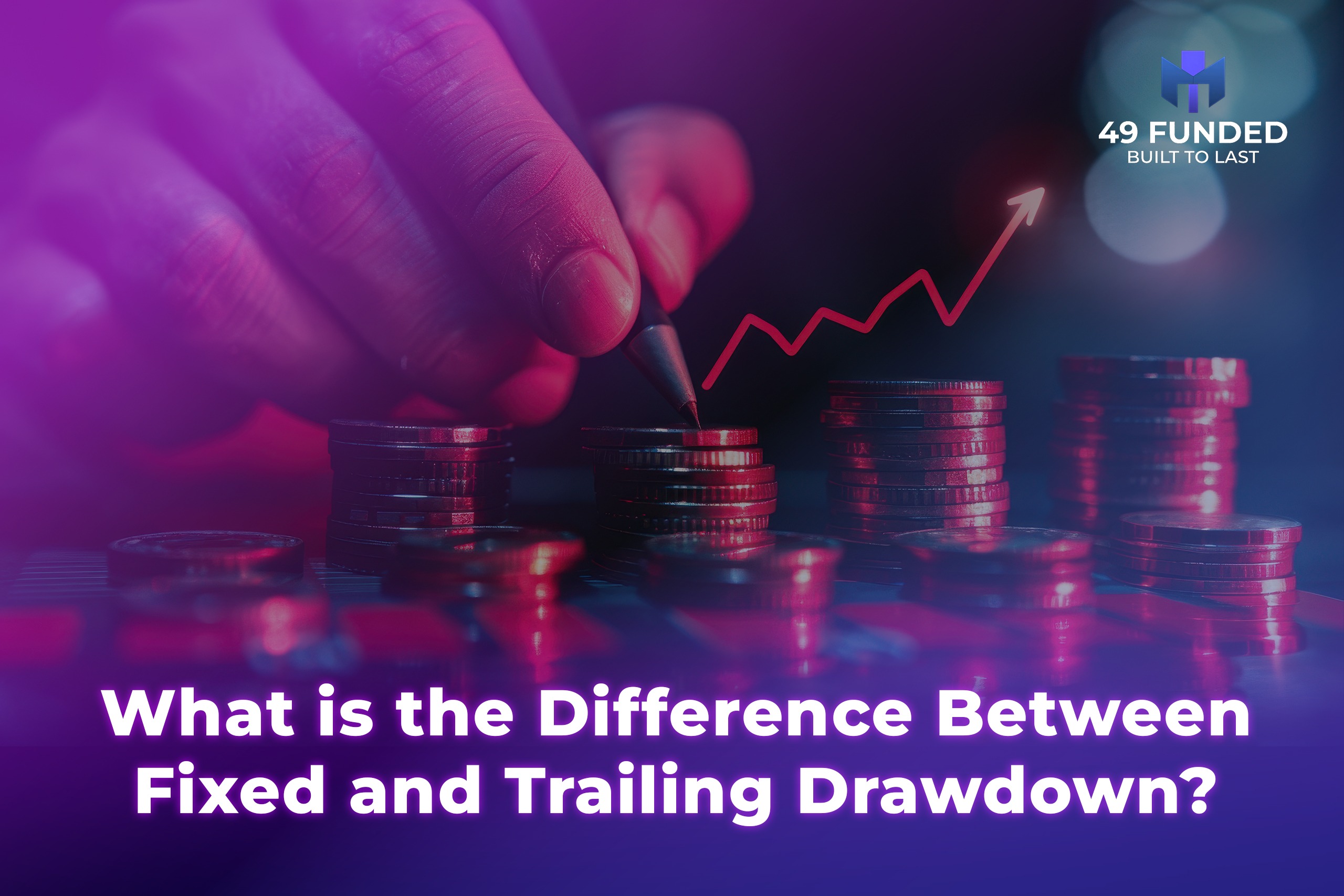In the rapidly evolving world of proprietary trading, understanding risk parameters is crucial. Whether you’re a beginner or an experienced trader exploring funded account options, two terms you’ll frequently encounter are fixed drawdown and trailing drawdown. These terms aren’t just jargon—they can directly impact your trading strategy, risk management, and success with a prop firm for Indian market like 49 Funded.
In this blog, we’ll break down the meaning, implications, pros and cons, and strategic differences between fixed and trailing drawdown. This will help you make informed decisions while selecting a funded account for Indian market traders.
Understanding the Basics: What is Drawdown in Trading?
Before we dive into the difference between fixed and trailing drawdown, it’s important to understand what “drawdown” means in trading. Simply put, drawdown refers to the reduction in your trading account balance from a peak to a trough due to a series of losing trades.
In proprietary trading, drawdowns are used as risk control measures by prop firms to ensure traders don’t lose excessive capital. Different firms implement drawdown rules differently, and that’s where fixed and trailing drawdowns come into play.
What is Fixed Drawdown?
A fixed drawdown is a type of risk limit that stays constant regardless of your trading performance. Once the maximum allowable loss is set, it does not move, even if your account grows.
Example of Fixed Drawdown:
Let’s say your funded trading account starts with $100,000, and the prop firm allows a fixed drawdown of $5,000. This means your account must never go below $95,000, no matter how high it goes afterward.
If you grow your account to $110,000, your drawdown is still based on $100,000.
If your account falls to $94,999, your account is breached.
Benefits of Fixed Drawdown:
Simpler to understand and manage.
Encourages disciplined risk management from the start.
Ideal for traders with conservative strategies.
Drawbacks:
What is Trailing Drawdown?
A trailing drawdown, unlike the fixed one, adjusts or “trails” your account equity peak. The more profit you make, the higher the drawdown threshold moves—maintaining a set difference from your equity high.
Example of Trailing Drawdown:
Using the same $100,000 account with a $5,000 trailing drawdown:
If you grow the account to $105,000, your drawdown limit moves up to $100,000.
If you then reach $110,000, your drawdown trails to $105,000.
However, if your equity drops from $110,000 to $104,999, your account breaches the limit.
Benefits of Trailing Drawdown:
Offers more flexibility and room for growth.
Rewards traders who build equity steadily.
Promotes consistent performance.
Drawbacks:
Can be confusing for new traders.
Puts more pressure to protect profits.
Increased chance of breaching after large gains and sudden drops.
Key Differences Between Fixed and Trailing Drawdown
| Feature | Fixed Drawdown | Trailing Drawdown |
|---|
| Adjusts with Equity? | No | Yes |
| Ideal for | Conservative or beginner traders | Experienced or aggressive traders |
| Risk Calculation | Based on starting balance | Based on highest balance achieved |
| Drawdown Breach Risk | Lower if profits accumulate | Higher if trader pulls back after gains |
| Mental Pressure | Steady | Dynamic and can be stressful |
Which One is Better for Traders in the Indian Market?
There’s no one-size-fits-all answer. But for traders exploring funded accounts for Indian market, understanding their trading personality is key.
Choose Fixed Drawdown If:
You’re a swing trader or someone who holds positions longer.
You prefer lower stress and more predictable risk parameters.
You’re new to prop firm trading and want a safer learning curve.
Choose Trailing Drawdown If:
You’re a scalper or intraday trader.
You have a proven track record of building equity consistently.
You can handle the psychological stress of a moving risk limit.
How 49 Funded Supports Indian Traders
At 49 Funded, we understand the unique needs of Indian traders entering the global proprietary trading ecosystem. That’s why we offer funded account options for Indian market participants with both fixed and trailing drawdown options.
Why Indian Traders Choose 49 Funded:
INR-friendly payout structure
Affordable account access plans
Local support tailored for Indian timezone
Educational content focused on drawdown management
Industry-standard trading platforms and analytics
Whether you’re looking for a prop firm for Indian market traders or want a flexible drawdown model that suits your trading style, 49 Funded is here to guide and grow with you.
Drawdown Strategy Tips to Avoid Breach
Here are a few powerful tips to manage drawdown wisely and protect your funded account:
Set Daily Limits – Allocate only a small percentage of drawdown per day.
Avoid Revenge Trading – One bad day shouldn’t result in exceeding your limits.
Secure Profits Regularly – Especially with trailing drawdowns.
Use Stop-Loss Wisely – Always use SLs to stay within the risk framework.
Track Performance – Use analytics tools to monitor equity peaks and drawdown margins.
Common Mistakes Traders Make with Drawdown Rules
Ignoring the trailing movement: Many traders think once they hit a new high, they’re safe. Trailing drawdown still follows!
Over-leveraging: Using large lot sizes increases the chances of quick account breaches.
Emotional decisions: Trading based on feelings instead of strategy can quickly eat into your drawdown limit.
At 49 Funded, we regularly educate our traders through webinars and resources on mastering risk management so they can avoid these pitfalls.
Final Thoughts
Understanding the difference between fixed and trailing drawdown is critical for any trader, especially those entering the world of prop trading. For Indian traders seeking a funded account for Indian market, choosing a structure that aligns with your strategy can mean the difference between long-term success and early disqualification.
At 49 Funded, we aim to empower traders from India by offering clear rules, competitive account models, and risk frameworks that allow them to thrive. Whether you’re just starting out or refining your professional trading edge, choose a prop firm for Indian market that understands your journey—and backs your growth.







